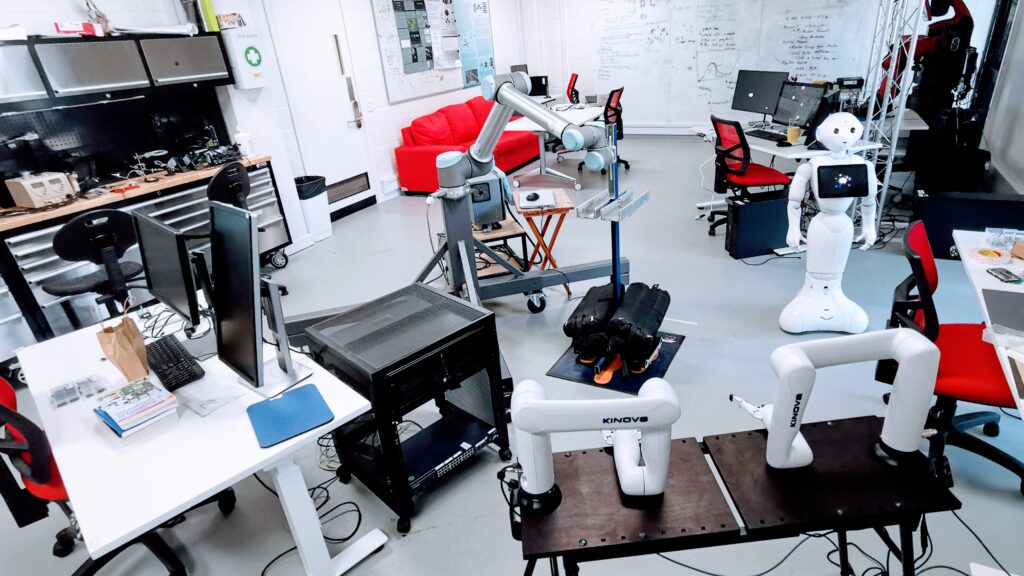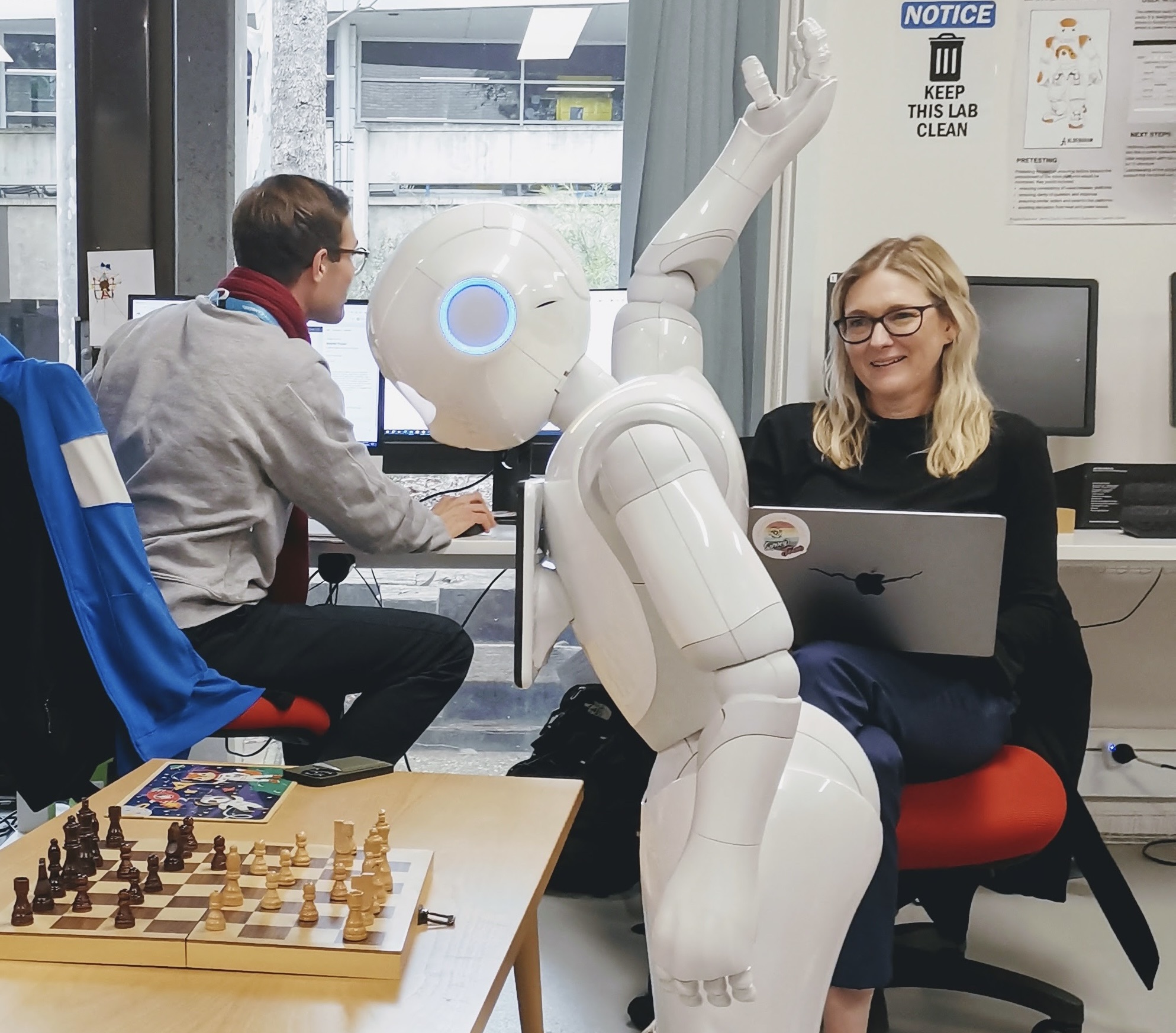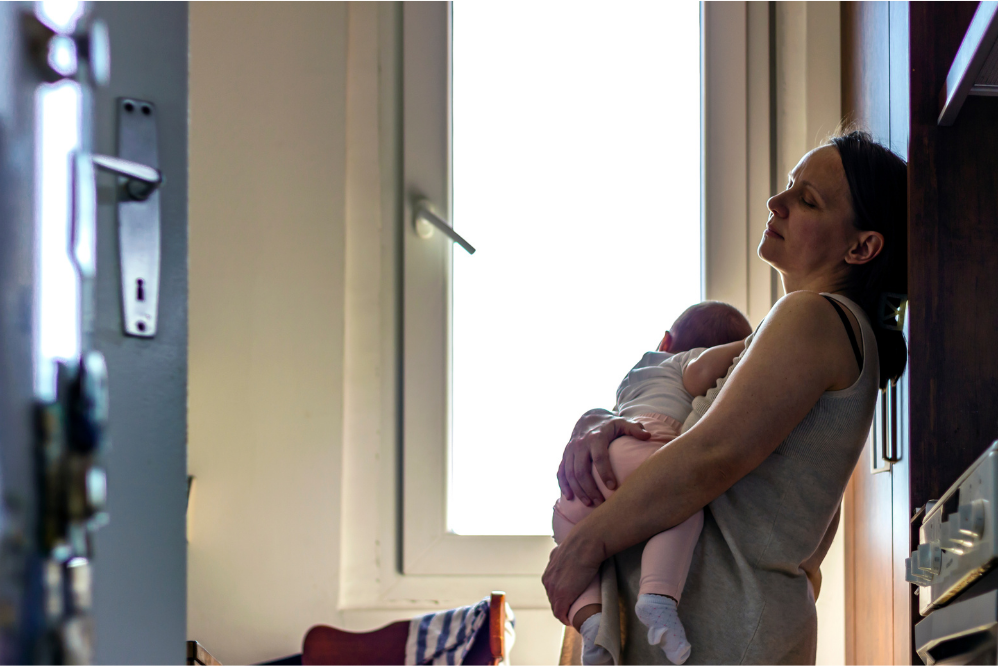If you were sitting next to someone at a dinner party, how would you explain your work and research in a nutshell?
There’s a bunch of different ways of answering this! I usually say I’m a researcher and lecturer in cognitive psychology, so I investigate different aspects of how people think, using approaches like experiments, surveys, interviews and ‘living labs.’
Some of my research looks at how we remember the past and imagine the future, and how this links in with mental health issues like anxiety. For example, in a recent analysis with my PhD student, Jessica Du, we found that people with high levels of anxiety imagine negative future events more vividly and in more detail than people with low levels of anxiety, and it’s the opposite pattern for positive events. This type of research can help us understand what drives or maintains anxiety in people, and help develop interventions to reduce anxiety, which is really relevant given the high rates of anxiety we’re seeing at the moment, especially among young people.
I also do a lot of work in human-robot interaction, which is about how we engage with and think about robots. In our Collaborative Robotics Lab, the roboticist Damith Herath and I look at factors that affect how robots interact with people in environments like aged care homes and hospitals.
I really like heading out ‘into the field’ with our team to see how robots are currently being used in different settings, and working out how we can improve the design, functions and roll-out of robots in those environments. It’s a really exciting field, because there’s so many questions we don’t have answers to yet, not just practical issues about where and when to deploy robots, but deeper questions about what people understand and believe about them, and how this can be shaped by different features of the interaction. There’s so much to do!

The Collaborative Robotics Lab at the University of Canberra. Picture: Supplied
How do you incorporate the insights and experiences of people into your work in a way that’s ethical? How do you get them interested in what you’re doing?
The best way to figure out what’s going on in a particular situation is to approach it from a lot of different angles, and I try do this in all of my work. So for example, with my work with young people and anxiety, we have projects analysing the data from big randomised controlled trials of interventions that could improve their wellbeing, but then also smaller projects where we ask young people directly their personal experience of the things they think affect their anxiety. Incorporating people’s perspectives in different ways not only gives you new ideas and helps stop you going down dead ends in a research sense, but also makes sure the people you’re working with are heard, giving them space to say in their own words what matters to them, which is critical.
Similarly with our robotics work, we’ve got these highly structured lab-based studies where we try to control everything except the variable we’re interested in, but then out in real-world situations it’s about listening to people and trying to understand their perspectives on the situation or problem. One of our Lab students, Sharni Konrad, is great at this – finding and listening to people to help understand how or why a robot might be being used (or not used!). Without incorporating everyone’s voices, there just isn’t going to be a good outcome, whether you define a ’good outcome’ from a scientific, efficiency, accessibility or ethical standpoint.
Let’s wind back the clock a bit. Why did you go into this field? What was compelling about it?
Great question. At a really basic level, I guess I’m interested in why people do things – I think a lot of us feel this way! I’m just lucky enough to have a job that I get to do this. So I was always drawn to how we think, and what factors affect our thinking. When combined with my interest in technology, I found myself in human-computer interaction, human-robot interaction, and artificial intelligence.
Venue Hotel Realm, 18 National Circuit, Barton ACT 2600
Tickets Members – $29 Non-members – $55 (Your ticket includes food and drinks!)
What impact do you hope your work has? Or give concrete examples of where/how your work is making change? What do you want readers to know about?
I wouldn’t be in this job if I didn’t think I could make a difference! I do like that I get to contribute in a lot of different ways. On a very basic level I’m contributing to what we know about how the mind works, and then there’s the potential applicability of this work in mental health treatment. Some recent analyses we did looking at what factors predict suicidal behaviours in young people is helping to build the case for anxiety as an important predictor of later behaviours, and anything we can contribute in that space is so important.
I also think everyone recognises that we’re at a significant point with humans and technology, and my role here is to help focus on the human perspective – the more psychology and social science researchers we can get working in this space the better! We need multidisciplinary answers to these questions, and sometimes it can be hard to get all of the right people ‘in the room’.
And I also teach a lot! I work with several hundred first year students every year, teaching them about how to conduct research, and it is really rewarding to give them lots of real-world examples of how to do research, and talk about why understanding and knowing how to do it is important.

Janie Busby Grant. Picture: Supplied
Do you view yourself as feminist researcher? Why? Why not? What does the word mean to you in the context of your own values and also your work?
Yes, definitely, I think of myself as a feminist always, including in my research. I think it pervades all aspects of how I go about my work, how I identify and learn from my participants, how I try to ensure I’m hearing from diversity of sources, how I interpret and report on my findings.
And then there’s all the practical ways in which I try to support women in research, particularly through providing opportunities for up-and-coming female researchers – and seeking out mentoring from those women more experienced than me.
Particularly in the technology space, there’s still a whole lot more we need to do for girls and women to get engaged in technology – we see a lot of great female representation in psychology, but… not so much once you start getting into the humans-and-tech space. So I’m working to bring in some great young female researchers into the field!
Why did you get involved with Franklin Women?
Speaking of supporting women and being supported… I’ve so much enjoyed being part of Franklin Women for the last year or so – it’s been a whole new way of finding interesting women to talk with about a whole range of work (and not-work!) issues. I started with their mentoring program last year, which was fantastic and really helped me rework what I want to achieve over the next few years. Since then, it’s been fantastic to find a dedicated space that is work-adjacent – supporting me within the research space, while being a social community as well. I’m super excited to be part of their new Canberra Peer Advisory Group next year!
- Picture at top: Janie working with Softbank’s Pepper robot in the Collaborative Robotics Lab. Picture: Supplied
Ginger Gorman is a fearless and multi award-winning social justice journalist and feminist. Ginger’s bestselling book, Troll Hunting,came out in 2019. Since then, she’s been in demand both nationally and globally as an expert on cyberhate and the real-life harm predator trolling can do. She's also the editor of BroadAgenda and gender editor at HerCanberra. Ginger hosts the popular "Seriously Social" podcast for the Academy of the Social Sciences in Australia. Follow her on Twitter.





